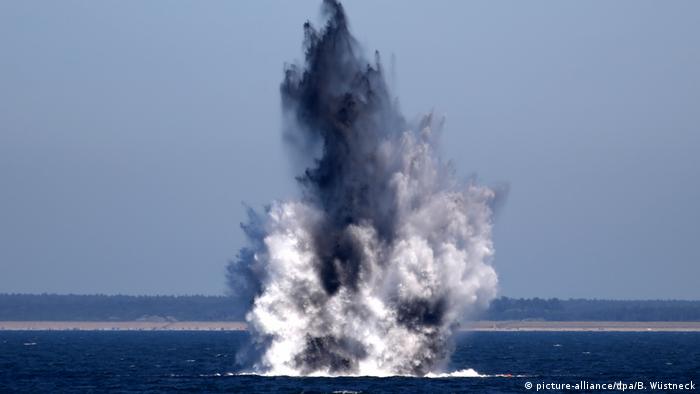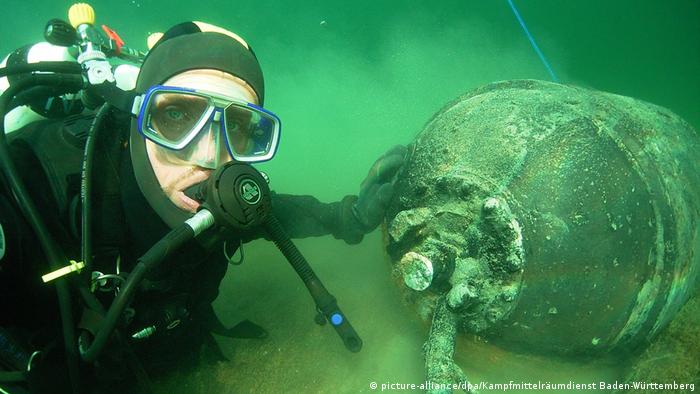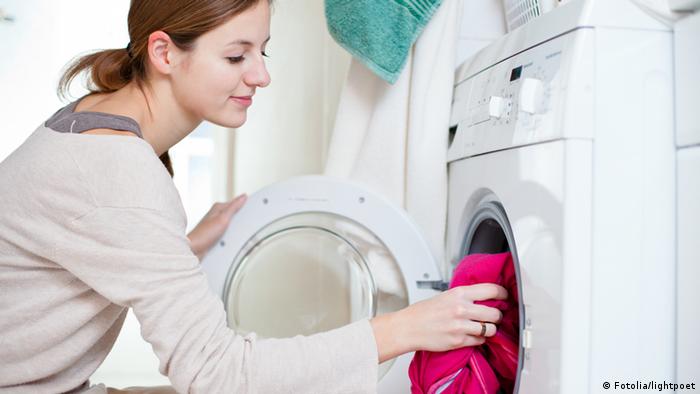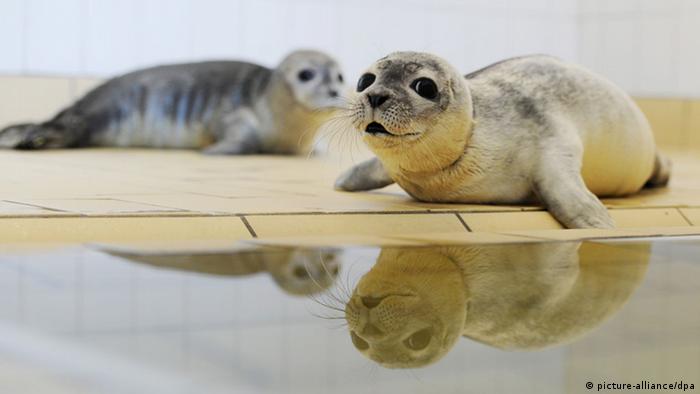At the latest since the end of the 2. World war, left to rot tons of bombs and shells on the bottom of the North sea and the Baltic sea. They could explode, that is the least of your worries.

To find amber, belongs to the Baltic sea vacation like the waves of the sea. Although it is not easy to find, but if you are, then you are stuck in the starting mats jewelry stone often big Surprises. The reveal, when the caramel-colored resin is polished and clear view of what is on the inside – often fossil inclusions from the ancient slumber.
It is also a 67-year-old rock collector, who went three years ago on a beach East of Kiel for a walk and some picking up, and held it for amber. It nearly cost him his life.

When phosphorus is washed up on the beach, it can be easily confused with amber.
What he held in his hands was a piece of white phosphorus. If stranded on the coasts, he seems harmless. Once it dries, ignites it, however, and with great force. Phosphorus burns at about 1300 degrees and the water not clear. Trying to do that, it forms phosphoric acid, which leads to severe burns. The phosphorus, a relic from the bombs of the 2. World war, just burns more.”
After the end of the 2. War should be disarmed, the then still existing German Reich. To it belonged also to eliminate stockpiles of Ammunition as soon as possible,” explains Ingo Ludwichowski, managing Director of NABU Schleswig-Holstein.
The ammunition was loaded on a ship, of the sea driven and tossed it overboard. The practice was so common that today, about 1.6 million tons of munitions in German seas – 1.3 million in the North sea, 300,000 in the Baltic sea.
Not a serious Problem, it was for a long time by the authorities.
The long fight for the truth

After the 2. World war should disappear bombs as quickly as possible. Today, this is a Problem, said Ingo Ludwichowski from NABU.
How big is the scale of the problem, however, was actually discovered first, the marine biologist Stefan Nehring. He actually works in the area of invasive species and should evaluate the load of the coastal waters of the German North sea. “Because it was a bit of everything, to sewage plant, no lines, and what I know. And while researching this I stumbled on Ammo sinkings,” recalls Nehring.
He knew that ammunition had been sunk in the vicinity of the island of Bornholm in the sea. Small quantities of the speech, which had landed in the sea. But Nehring found evidence that over the years, the ship’s cargo of goods via ship cargo in the sea and landed. So he began to investigate.
In the Federal archives in Koblenz, where he lives, he began to pore over mountains of documents. In the end, he was able to prove that the quantity of bombs and shells must be in the sea much larger. Calculations also had to accept the authorities, finally, finally, based on your own Numbers.

Bombs must be recovered, such as here at lake Constance. You will be blown up, contaminating your chemical components of the environment.
In the air is not a solution to chase
But what you should do with all these bombs? Now and again they had been in the past, blown up. With negative impact: “In the case of the detonation of a 500-kilogram bomb, perhaps two-thirds or three-quarters of the explosive are implemented in substance,” said Ingo Ludwichowski. “But the Rest passes first into the water and is dispersed by the blast then to the other side.”
Also the explosions have devastating consequences. “To kill a diver or a porpoise, if you are a few hundred meters away from the Explosion, and the same applies to the fish,” says Ludwichowski. “And even from several kilometers away, it has an impact on your hearing.” – Harbour porpoises and even some species of fish leave in the murky water, often alone, on their hearing to hunt or navigate.
And then the poison, there are still substances: Even conventional explosives are highly toxic. Hexanitro diphenylamine or HND, for example, were during the 2. World war by the German military extensively used for bomb-making. “HND discolored, first of all, the hands, but in this way also in the body and is carcinogenic and mutagenic,” so Ludwichowski.

If today someone disposed of the bombs, especially companies that install underwater cables or Pipelines.
Time bomb
“In the coming decades will be a huge Problem,” says Stefan Nehring. Because bombs are made of metal, and metal corrodes. And in the short or long various poisonous substances are released and end up in the Ecosystem.
There are signs that this is already happening: In fish In the Baltic several high arsenic are noticed concentrations. Poison gas ammo seems to be as a source probably. “The explosives crumbles and is so fine that it can be, for example, of mussels taken,” said Ingo Ludwichowski. “Mussels are either part of the food chain, or, in principle, also for the people available.”
The only real solution would be to retrieve the ammunition as quickly as possible and to dispose of, what would be the quantities of a gigantic and very expensive. “For reasons of state as well as nothing happens,” says Nehring. Unless it is to lay a Pipeline on the sea floor or a wind Park to be built. “Then the operator must search for ammunition and dispose of and the authorities sit back,” says Nehring.
“This is a huge problem and it is becoming more, not less,” says Ludwichowki. Not only more and more bombs are going to give rust through and their poisonous cargo price, if the metal case is gone, it will be virtually impossible to find the explosives. It’s a bet, then, is really running against time.











